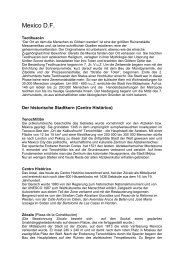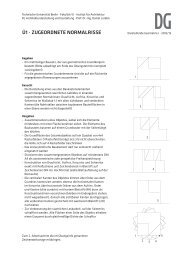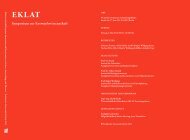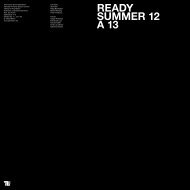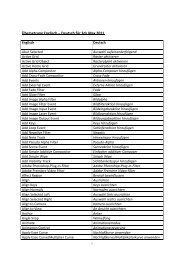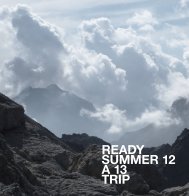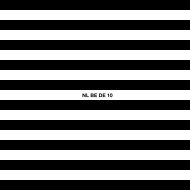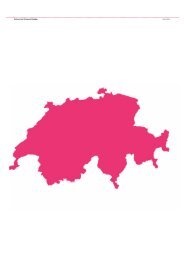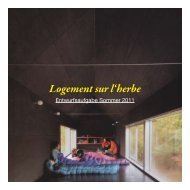CoCoon - Contextual Construction - TU Berlin
CoCoon - Contextual Construction - TU Berlin
CoCoon - Contextual Construction - TU Berlin
You also want an ePaper? Increase the reach of your titles
YUMPU automatically turns print PDFs into web optimized ePapers that Google loves.
<strong>CoCoon</strong> - <strong>Contextual</strong> <strong>Construction</strong> Technical University of <strong>Berlin</strong> | Faculty VI | Sector for International <strong>Contextual</strong> Architecture <strong>CoCoon</strong> | Dipl-Ing. U.<br />
CONTINENT: Africa > LAND: Burkina Faso > REGION: Boulgou > SUBREGION: Gando<br />
Authors: Simone Maxl, Inka Göbel, Heike Holtschke, Jan Schreiber<br />
Date: June 2005<br />
GANDO<br />
Education<br />
There are two school buildings where most of the children,<br />
living in a 10km radius, go to. Every class has got about 80 pupils.<br />
Pic. 1: Location of Gando in the province of Boulgou<br />
F A C T S<br />
Inhabitants: ca. 3000<br />
Population Density: ca. 30 Inh./km²<br />
Average Income: subsident<br />
Life Expectancy: 45 (w), 43 (m)<br />
Language: mòore, bissa<br />
Religion: 50% moslems, 20% christians<br />
Climate: dry savannah<br />
Topography: flat, exept few smaller rocky hills<br />
I N T R O D U C T I O N<br />
The village of Gando lies between Tenkodogo, capital of the<br />
province Boulgou, and Garango. The 5km dust path going to<br />
Gando is hardly driveable, especially during the rain season.<br />
Gando has no central water supply nor electricity or drainage.<br />
Its 3000 inhabitants live in several housing compoundsor<br />
granges, each one housed by a family-clan spread over the dry<br />
and meagre savannah-plateau.<br />
The most important issues of Gando are population growth<br />
and increasing desertification. Aridities become more frequent<br />
and the capacities for storing comesibles are very limited.<br />
Living becomes harder, so more and more people leave Gando<br />
to earn money in Ghana or in the Ivory Coast.<br />
Pic. 2: The village of Gando<br />
I N F R A S T R U C T U R E<br />
Water<br />
Two 50m deep manual wells supply the drinking water for all<br />
3000 inhabitants. During the daylight they need to be run permanently<br />
by the women, who´s job it is also to carry the water<br />
on their heads to their houses.<br />
The wells are the places where clothes are washed and cattle<br />
is soaked.<br />
Streets<br />
From the asphaltic road, linking Tenkodogo with Garanko, a<br />
small dirt track (pic. 4) leads to the 5km far village of Gando.<br />
All other trails (dashed lines in pic. 2), connecting the housing<br />
compounds with each other, can not be driven by car.<br />
There is no electricity; very few people own solar panels to run<br />
a lamp at night or to listen to the radio.<br />
Pic. 3: One of two manual wells Pic. 4: Gando´s main way<br />
Health<br />
The next basic health centre is about 8km away. Most of the<br />
people can not afford the treatment or medicine.<br />
Other equipments<br />
The community of Gando runs a sorghum mill, powered by a<br />
diesel engine. This means a great relief for the women´s daily<br />
work. Next to the mill there is a small market place where once<br />
a week food and things like batteries and matches are sold.<br />
Apart from the market there are no further commercial activities<br />
in Gando. There is also a small, unornamental mosque,<br />
buildt of concrete blocks infront of the market place.<br />
Pic. 5: View over typical housing structures<br />
S E T T L E M E N T S T R U C T U R E<br />
Buildt structure<br />
The village of Gando consists of more than 50 housing compounds<br />
(circles in pic. 2), scattered over the savannah-plateau.<br />
Around them lie the acres where almost exculsively sorghum<br />
is cultivated.<br />
Every compound is composed of a agglomeration of serveral<br />
thatched huts, metal sheet covered huts and smaller sorghum<br />
stores. They always build the dead-end of the dirt trail going<br />
there. The compounds are enclosed by walls made of clay<br />
with a height of ca. 1,4m. Inside you find further walls, forming<br />
courts and leaving pathes in between.<br />
All other buildings for common purposes, such as schools, religious<br />
buildings or the wells lie outside of the compounds.<br />
In Gando there is no building that has more than one story.<br />
1
<strong>CoCoon</strong> - <strong>Contextual</strong> <strong>Construction</strong> Technical University of <strong>Berlin</strong> | Faculty VI | Sector for International <strong>Contextual</strong> Architecture <strong>CoCoon</strong> | Dipl-Ing. U.<br />
CONTINENT: Africa > LAND: Burkina Faso > REGION: Boulgou > SUBREGION: Gando<br />
Social structure<br />
Even if Gando nowadays is policitally governed by the province<br />
of Boulgou, the local chief or „king“ still plays an important<br />
role. He enjoys highest public respect, and acts as a judge, solving<br />
rivalties or conflicts. Whenever important decision concerning<br />
the society of Gando have to be made, a meeting is<br />
held. It takes place in the shadow around the roofed chief seat<br />
(pic. 6). Only certain male persons, mainly older men, are allowed<br />
to participate.<br />
Every housing compound belongs to one family clan or extended<br />
tribal family. Up to 100 humans beings of serveral generations<br />
live there together. An average family clan has got about<br />
50 members. The fluctuation between this clans is very high,<br />
polygamie and rivalries can be reasons therefor.<br />
Inside the compound every family has got a court attached to<br />
at least one hut. Men who have more than one woman have to<br />
provide at least one hut with court for each woman.<br />
Pic. 6: The chief´s seat<br />
Images:<br />
Pic. 1: ???; Pic. 2.: Francis Kéré; Pic. 3-4: Jan Schreiber; Pic. 5: ???; Pic. 7-8: Francis<br />
Kéré; Pic. 9: ???; Pic. 10: Jan Schreiber<br />
Pic. 7: Boy on his way to school Pic. 8: Women carrying water<br />
M O B I L I T Y<br />
In whole Gando nobody owns a car. The common way to move<br />
is by feet, often carrying heavy loads such as water or fruits to<br />
sell them on the market in Garango. The few who can affort<br />
use bikes or even mopeds.<br />
Since 2005, the village community disposes of a ambulance<br />
moped to take the ill or injured people to the 8km away health<br />
centre.<br />
There is no kind of public transportation, the next buses leave<br />
from Tenkodogo.<br />
Means of transportation, even bikes, represent a status symbol<br />
in Gando´s sociecty. This general lack of mobility contributes<br />
to the dream of leaving Gando that many inhabitants share.<br />
M A T E R I A L S<br />
Almost everything in Gando is made of organic materials, above<br />
all clay. Other organic materials used for the construcion are<br />
straw, natural stones, wooden branches, leaves and calabashes.<br />
Nearly the only anorganic material that can be found is metal<br />
sheets, used for roofing or doors. The number of metal sheet<br />
covered huts has already exceeded the number of thatched<br />
huts. Metal is prefered because it is considered a modern material,<br />
despite of its obvious climatic and accoustic disadvantages.<br />
One technical advantage of metal sheets as roofing is<br />
that it has not got to be repaired or exchanged as often as traditional<br />
thatched roofs.<br />
Source:<br />
Students excursion in march 2005 with Dipl. Ing. Francís Kéré, Tu-<strong>Berlin</strong><br />
Generally the way of building with clay and straw, as the people<br />
of Gando practice it, needs a lot of care to maintain this<br />
kind of architecture. Especially because of the heavy rain falls,<br />
roofs, walls and grounds have to be remodeled or repaired<br />
every year.<br />
In Tenkodogo are other materials available, such as cement,<br />
reinforcing steel, concrete blocs and wooden boards and beams.<br />
Pic. 9: Top view on a typical settlement<br />
Pic. 10: View inside a housing compound<br />
Websites:<br />
http://www.fuergando.de 29.06.2005<br />
2




